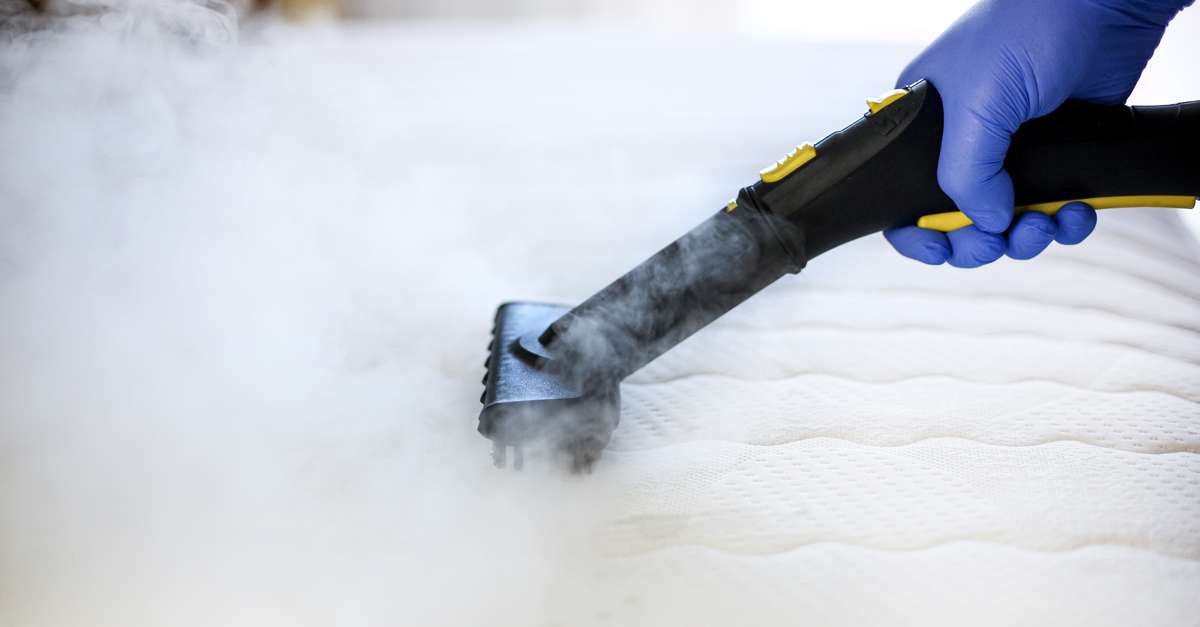A natural phenomenon that has existed for thousands of years, steam has grown to become one of the most advanced cleaning solutions of the 21st century. From humble beginnings cleaning railways and boilers, steam is now a staple used in many establishments to kill bacteria and microorganisms efficiently and effectively.
This natural solution has revolutionized cleaning and our standards for sanitization. But how much do you know about steam cleaners and their rise to cleaning superstardom? Let’s uncover the history, mechanics, implementations, and uses.
Before the 21st century
Since the late 1800s and early 1900s, steam cleaning has been used to clean oil and grease from railways, boats, and vehicles. Its use became more widespread with the rise of boiler manufacturers.
At its inception, steam cleaning involved a boiler that heated water to a high temperature. Unfortunately, surfaces cleaned by this method remained wet, which could lead to mold, warping, or other damage. It wasn’t until around 40 years ago that European manufacturers began using superhot steam to clean, sanitize, and disinfect surfaces. This method became popular due to its ability to remove stains and odors.
21st century to present day
As technology evolved, steam cleaning became a fixed solution rather than a portable one. Its functionality was also upgraded with the creation of a pressurized, dry vapor that does not leave behind water or wet residue. From steam mops to handheld devices, steam cleaners are popular in residential and commercial buildings. Crews use them to clean and sanitize restaurants, hotels, and hospitals.
Steam is ideal for killing microorganisms and bed bugs, as it can penetrate fabric without damaging it. Since it is a dry vapor, its use eliminates the risk of water damage and assures a dry, clean surface.
Steam cleaning continues to innovate with technological advancements. By leveraging AI and robotics, it’s more accessible and efficient than ever before.
How does it work?
Modern steam cleaners heat water past its boiling point of approximately 100 C or 212 F and use the pressurized steam to clean surfaces through a nozzle or other attachment. The steam’s high pressure and moisture loosen dirt, grease, and stains, making them easy to wipe away. At the same time, it kills bacteria, harmful microorganisms, mold spores, and other allergens on contact without the need for harsh chemicals.
Steam cleaners have become a versatile tool that cleans more than just industrial machinery. Here are just some of the items and areas steam can clean:
- Flooring: Carpeting, hardwood, tile, and grout.
- Upholstery: Mattresses, curtains, leather, toys, and couches.
- Appliances: Fridges, stoves, ovens, washing machines, and barbecues.
- Rooms: Kitchens, bathrooms, and laundry rooms.
- Miscellaneous: Vehicle interiors, windows, and mirrors
One of the main reasons steam cleaning has become widespread is its ability to disinfect without harsh chemicals. It’s ideal for use in restrooms, kitchens, hotels, and hospitals.
Steam cleaning provides deep cleaning that helps eliminate pathogens that cause allergies, such as dust, mold, and microorganisms. As previously mentioned, it can also be used on various surfaces, from fabrics to flooring. In some cases, this versatility is facilitated due to the many available attachments:
- Small, round brush heads for upholstery.
- Targeted nozzle attachment for hard-to-reach surfaces.
- Mop or vacuum attachment for larger areas.
Purchasing a steam cleaner is no small investment. However, the upfront cost must be valued against the long-term time and effort savings. With high-pressure steam, you spend less on various cleaning products because you only need water to get the job done. You’ll also spend less time waiting for stains to lift with pre-treatment cleaners. With efficiency on your side, the effectiveness of a steam cleaner shines through.
Finding better ways to clean is just one piece of the puzzle. Many professionals also look for eco-conscious options, and steam cleaners check both boxes. By using only water vapor, steam cleaners reduce the need for chemical solutions that can be harmful to drains and can pollute the indoor air.
Standing the test of time
Steam cleaning has come a long way, evolving from an industrial powerhouse to a versatile, eco-friendly cleaning solution across various industries. In a world filled with technological advances, steam’s simple yet powerful phenomenon remains as relevant as ever.
Steam’s natural properties, such as its ability to eliminate bacteria, loosen stubborn stains, and effectively sanitize surfaces, make it a critical tool for maintaining cleanliness in diverse settings. Steam cleaning is a time-tested and forward-looking solution as industries prioritize sustainable and efficient cleaning methods. Its future remains reliable and has potential for exciting innovations and expanded applications.



